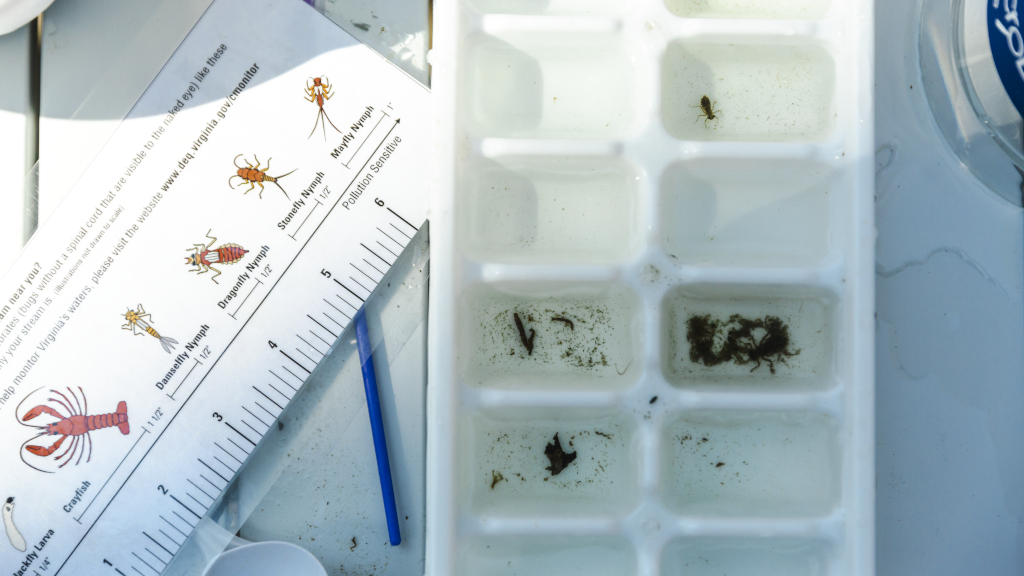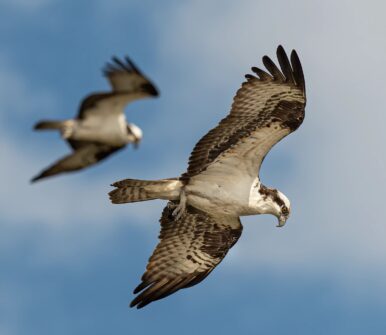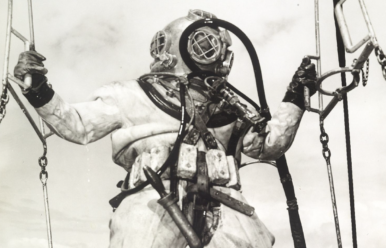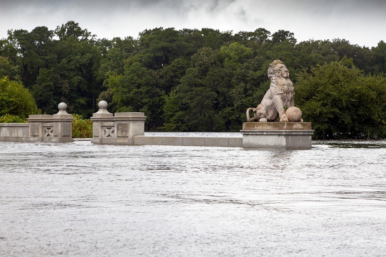Our talented team of Museum educators are committed to providing an engaging experience that brings SOL-related content to life for your students. We bring passion and energy to each program to ensure the highest level of impact and retention. To learn more about this program, click on one of the format options listed below.
Choose your experience:
Duration: 2 hours
Get ready to dive into our watershed through a program that focuses on place-based learning and conservation!
Inside the museum, students will be led through two stations. One indoor station includes a guided tour through the museum with one of our staff, focusing on the history of Mariners’ Lake and Park and how our landscapes and habitats have changed over time. The other indoor station includes hands-on demonstrations where students will see firsthand how permeable and nonpermeable surfaces impact runoff into Mariners’ Lake. Students will also be encouraged to discuss how they can help positively impact the health of our local watershed.
The second half of the field trip consists of two outdoor stations centering around the current health of Mariners’ Lake. Students will write and test a hypothesis by investigating both abiotic and biotic factors in the Lake. To do this, they will engage with a variety of water quality tests and sift through leaf packs that house freshwater, benthic macroinvertebrates found in our Lake.
Teachers, please note: As half of this field trip occurs outside, all students are encouraged to dress for the weather and bring a sealable water bottle.
Learning Objectives
Students will:
- Practice scientific investigation skills, including data collection, recording, analysis, communication, and teamwork
- Gain a better understanding of how our human impact (past, present, and future) directly relates to the health of our local Chesapeake Bay watershed
- Feel empowered to be a part of the solutions that foster a healthy watershed in Hampton Roads and the Chesapeake Bay
Science (VDOE 2018):
- Middle: 6.1 (a, b, c, d), 6.6 (b, d, e, f), 6.8 (a, b, c, d), 6.9 (a, b, e), LS.1 (a, b, c, d), LS.4 (a, b), LS.5 (c), LS.6 (b, d), LS. 7 (a, b), LS.8 (a, c), LS.9 (a, c), LS.11 (a, c)
- High: ES.1 (a, b, c, d), ES.6 (c, d), ES.8 (c, d), ES.10 (e), BIO.1(a, b, c, d), BIO.2 (a), BIO.6 (a, c), BIO.8 (b, c, d)
Next Generation Science Standards:
- Middle: MS-LS2-2, MS-LS2-4, MS-LS2-5, MS-ESS3-3, MS-ESS3-4
- High: HS-ESS3-1, HS-ESS3-4
Ocean Literacy Principles
- 1) Earth has one big ocean with many features.
- 6) The ocean and humans are inextricably interconnected.
Pricing:
Payment can be made before the program, or we can invoice following your program.
- Programs at the Museum are $4.50 per student.
All adults accompanying a field trip are free. - Programs at your location are $4.50 per student.
- Virtual education programs are $125 per program.
Reservations are required for all programs and are booked on a first-come, first-served basis. Programs fill quickly in the fall and spring, so make your reservations a minimum of two weeks in advance.
Need some questions answered?
Our team is happy to answer any questions you may have, or recommend the best program for your class.
Call or email our Education team:
[email protected]
(757) 591-7745





